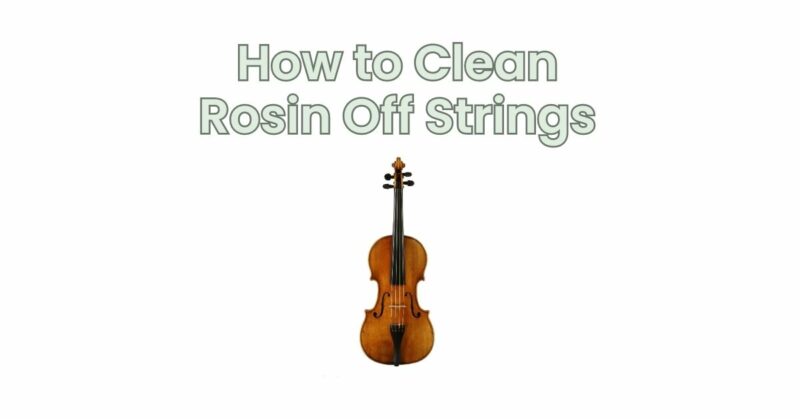Rosin is an essential accessory for violinists, violists, and cellists, providing the necessary friction between the bow and the strings. However, over time, rosin buildup can accumulate on the strings, affecting their tone and playability. Cleaning rosin off the strings is crucial for maintaining optimal sound quality. In this article, we will provide you with a step-by-step guide on how to clean rosin off strings effectively and safely.
Step 1: Gather the Necessary Materials
Before cleaning the rosin off your strings, gather the following materials:
- Soft, lint-free cloth or microfiber cloth
- Rubbing alcohol (isopropyl alcohol) or string cleaner solution (specifically designed for string instruments)
- Q-tips or cotton swabs
- Newspaper or protective surface (to catch any debris or excess rosin)
Step 2: Prepare the Instrument
Lay down the newspaper or protective surface beneath the instrument to catch any rosin particles or cleaning residue that may fall during the cleaning process. This will help keep your workspace clean and prevent any damage to the instrument’s finish.
Step 3: Remove Excess Rosin
Using a soft cloth or microfiber cloth, gently wipe the strings to remove any loose or excess rosin. Start at the bottom of the fingerboard and work your way up towards the tailpiece, applying light pressure. Be careful not to press too hard or put excessive strain on the strings.
Step 4: Apply Cleaning Solution
If you’re using rubbing alcohol, dampen a small section of the cloth with the alcohol. If you have a string cleaner solution, follow the manufacturer’s instructions for application. Holding the cloth with the cleaning solution, lightly rub each individual string from the bottom of the fingerboard to the tailpiece. Avoid getting the cleaning solution on the instrument’s body or varnish.
Step 5: Remove Residue
To remove the rosin residue and any cleaning solution, use a dry section of the cloth and gently wipe each string. This helps to ensure that no excess residue or moisture remains on the strings.
Step 6: Clean the Strings’ Grooves
Rosin can accumulate in the grooves of the strings, affecting their playability. Take a Q-tip or cotton swab and dampen it with the cleaning solution or rubbing alcohol. Run the swab along the grooves of each string, removing any residual rosin buildup. Use a dry Q-tip or cotton swab to wipe away any excess moisture.
Step 7: Allow the Strings to Dry
After cleaning, allow the strings to air dry completely before playing. This ensures that any residual moisture evaporates, preventing potential damage to the instrument or the strings themselves.
Step 8: Polish the Instrument
Once the strings are dry, you may want to gently polish the instrument with a soft, clean cloth to remove any remaining residue or smudges. Avoid using any harsh chemicals or abrasive materials that could damage the varnish.
Conclusion:
Regularly cleaning rosin off the strings is essential for maintaining optimal sound quality and playability. By following this step-by-step guide, you can effectively remove rosin buildup and restore the vibrancy of your strings. Remember to exercise caution, use the appropriate cleaning materials, and avoid getting excessive moisture on the instrument’s body. With proper care and maintenance, your strings will continue to produce beautiful, clear tones, enhancing your playing experience on the violin, viola, or cello.


